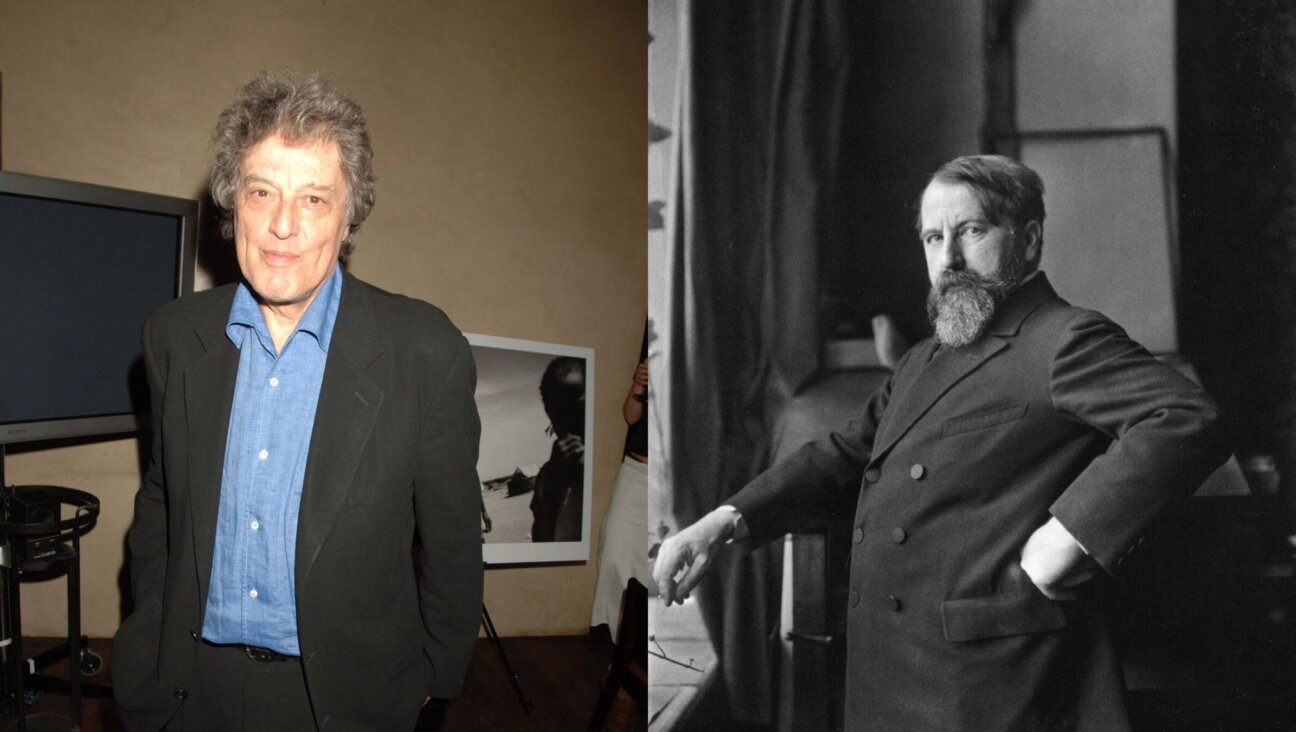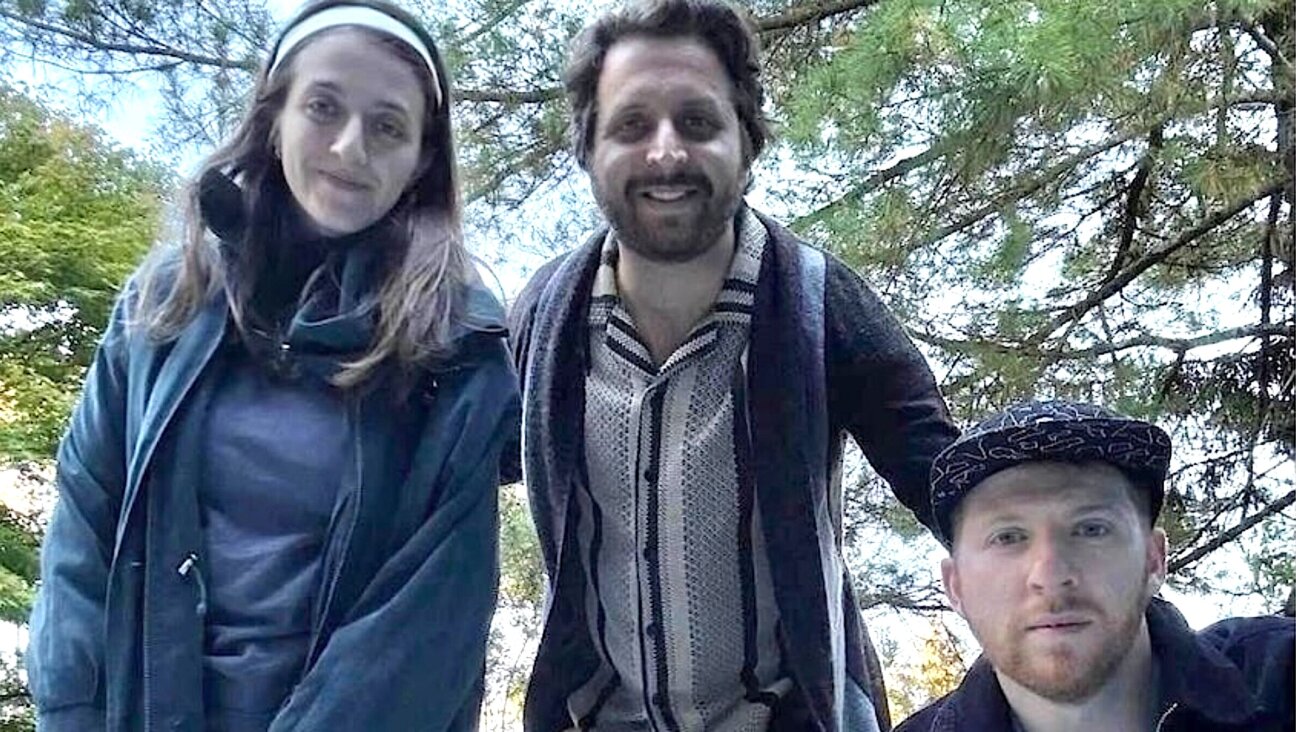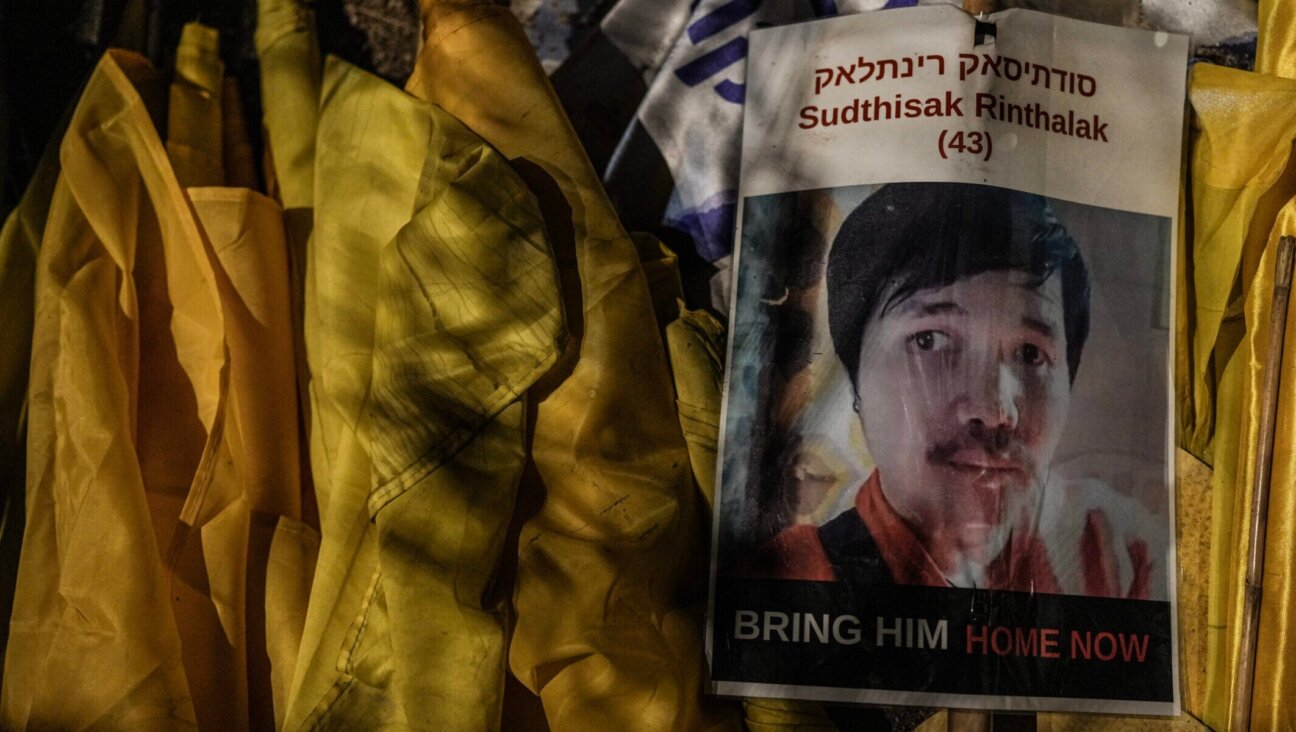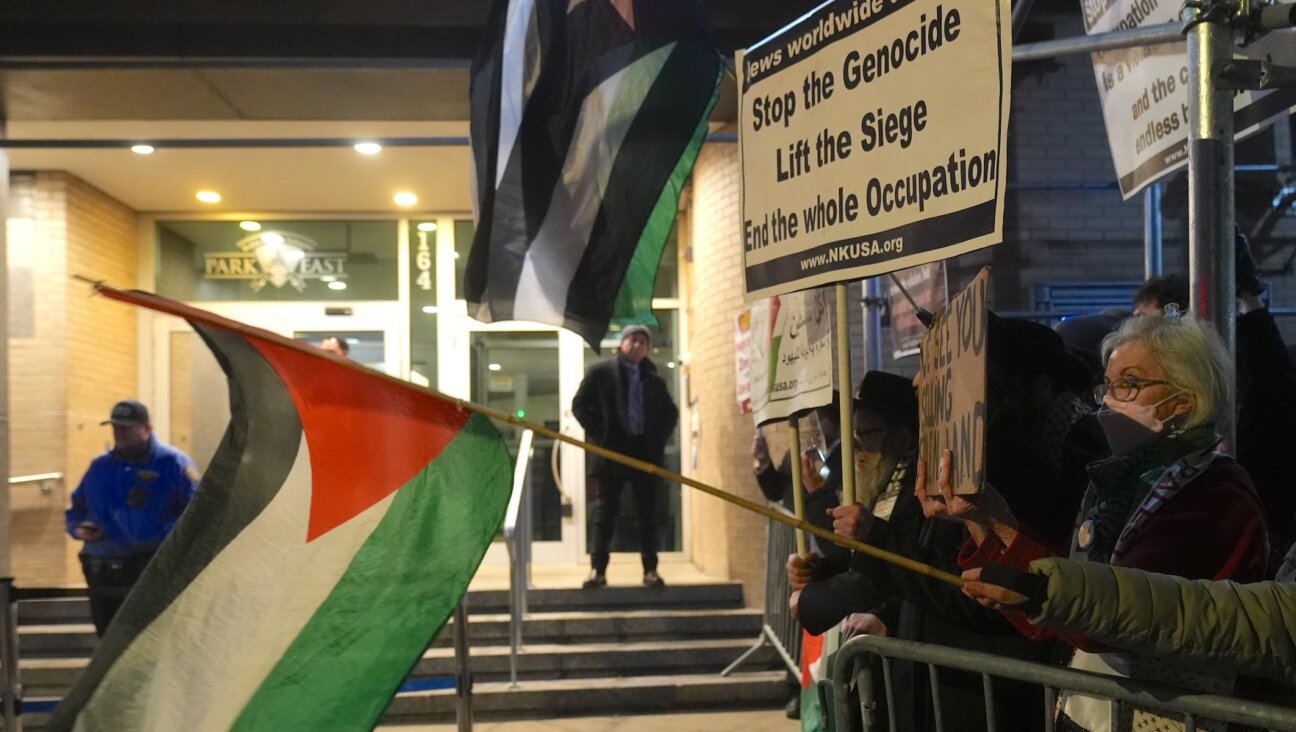More Than Words

Graphic by Angelie Zaslavsky
If Passover is the holiday of questions and answers, Yom Kippur is often the holiday of confusion and befuddlement. Why? On Passover, symbols rich in texture and history are explicitly explained within the Seder ritual; indeed, explaining is part of the point. Yet on Yom Kippur, ostensibly the holiest of days, suddenly we’re left to fend for ourselves in a confusing haze of outdated theology and deracinated ritual.
As a result, Yom Kippur has become a day of pseudo-solemnity on which millions of Americans pretend to beat their breasts in contrition. No surprise that so many people who go to synagogue feel rebellious, infantilized or wishful that they’d never come at all.
Yom Kippur need not be this way. It can be a powerful day of catharsis and renewal, even — perhaps especially — if you don’t believe in a Santa-like God who knows if you’ve been bad, and who keeps notes in a Book of Life. But in order for it to be so, rabbis, educators and all of us in the pews need to be clear about the context, the ends and the means of the holiday.
Context first. We need to understand Yom Kippur in functional rather than mythic terms. As readers of this column know, this orientation is something of a personal obsession of mine. The myths of Jewish tradition — God commanded us to do this; this observance remembers that event — are believed by only a small minority of Jews. But the practice can be felt by all.
For example, approaching fasting from a functional perspective, one asks such questions as: “What does this practice do for me?” “How does it change my consciousness?” “How does it enable me to do the hard work of introspection and even repentance?” From a mythic perspective — which is often the only one offered in contemporary synagogue life — we receive only historical, often unsatisfying answers. We fast because God told us to; because that’s what the tradition says; because it is commanded of us. In this way, what could be a potent practice of personal self-transcendence devolves into meaningless ritual or, worse, pseudo-penitential self-flagellation.
Similarly, the liturgy of Yom Kippur, ornately embellished by centuries of Jewish literary productivity, has ossified into a myth of its own, with obscure medieval piyutim, or liturgical poems, and woeful responsive readings. But from a functional perspective, the liturgy is a tool, a technique. It’s meant to open the heart, to demand introspection, to shake up the soul. Going through the motions achieves the exact opposite of the intended purpose. If it isn’t working, drop it.
Working to what ends?
Introspection, self-examination, catharsis and love. Rabbis should ask their congregants a couple of very basic questions: “Why are we here?” “What are the goals of the next 24 hours of ritual observance?” Rabbis aren’t entertainers; they’re emcees trying to create an environment for participants to do hard work. But if the participants (or hosts) don’t know what kind of work they’re being invited to do, they can’t even begin to do it.
Ironically, the goals of Yom Kippur are more important now than ever. Ours is a time of increasing vulgarity and anger in our public world. In our politics, our media and even the way we speak with one another, reflection and introspection are increasingly rare. It’s tragic that such a precious opportunity as a day dedicated to those activities is squandered — blocked by outdated theological gibberish, ignorance and apathy.
We can do better, by letting the body lead.
The primary method of Yom Kippur, the way it gets us to love more, self-aggrandize less and break down the walls that keep us from living up to our ideals, is kapparah, or spiritual catharsis. The physical meaning of kapparah is scrubbing, purifying, cleansing; it’s what the Israelites had to do after the First Temple had been defiled. Spiritually, kapparah isn’t mere “atonement” (whatever that means) — it’s scrubbing away the layers of self-delusion and self-importance that keep us from self improvement.
To aid this process, which does not depend on liturgy or belief of any kind, Yom Kippur emphasizes the body. Let’s look at three examples: fasting, self-adornment and using the body in prayer.
First, fasting is meant to focus the mind and bring the body into the “day of death” (another of the holiday’s names), so that for one day we disregard our desires. It’s not meant to be an endurance test, or to afflict the body for affliction’s own sake. Rather, as Isaiah memorably preaches, fasting is meant to awaken the heart to the suffering all around us. It gets you in the mood, makes you a little desperate, helps untie the tangles in the heart. Wishing each other an “easy fast” misses the physical point: Fasts are not meant to be easy.
Second, Jews are invited to abstain from showering and shaving; from wearing makeup, perfume or leather shoes, and from tending to the body’s beautification in any way. Though for many of us, Yom Kippur is the day to wear that expensive new dress or well-tailored suit to show off in synagogue, I challenge all of us to take a different path. Let’s disregard our personal appearance, with its markers of class and status. Let’s leave aside the fancy suits and dresses. Imagine the difference it would make to the energy in the room if all present wore not their best clothes, but ones focused on simplicity and attention to spiritual needs — such as a kittel, the white death shroud worn at times of transformation. Think about it: We always dress for the occasion. What does the occasion of catharsis, introspection and self-examination really demand? Armani?
Yom Kippur’s prayer practice is embodied, too. Hearing the shofar, beating the breast (especially effective with one’s own words, rather than prescribed ones), swaying back and forth — these embodied techniques are more important than printed prayers. And they don’t depend on whether you believe in God, judgment or theodicy. Forget the theology (for now), do the practice.
One of my favorite embodied-prayer techniques is bowing to the floor during the avodah, or service. On the mythic-historical level, this recounts the bodily movements of the Israelites in the ancient temple ceremony. From a functional perspective, bowing down all the way to the floor (as our Muslim brothers do every day) is an extraordinary gesture of submission. Once again, it doesn’t matter whom you’re submitting to, or if you even believe that there’s anyone there to submit to at all. The point is to subjugate your own ego to the values and ideals that transcend it, to the “God” within. What’s holding you back? Embarrassment?
Now, you can’t read about full prostration to understand what it’s about, just like I can’t convey the sound of the shofar by describing it. You have to actually do it. But imagine what would happen if, instead of standing and sitting in stiff formal poses, congregants were bowing to the floor, beating their chests, swaying back and forth — even dancing.
Yes, dancing on Yom Kippur. We may have forgotten it today, but in the Talmud and the Bible, Yom Kippur is described as a day of celebration as much as one of introspection and repentance. Why? Because — and this is a miracle that we can all experience — if we sincerely beg forgiveness, we get it. Now, whether God’s forgiving us, I don’t know. But I do know that if I can do the work to forgive myself and others, the catharsis of Yom Kippur is a deep, profound joy. To know that it is possible to start again, despite the stories we may have told ourselves, is one of the great contributions of the Jewish tradition to the world.
I have long felt that the “High Holy Days” have some of the deepest teachings of the Jewish tradition, garbed in some of the worst misunderstandings. Yom Kippur is a day of self-abnegation turned into a day of self-aggrandizement, a day of searing introspection turned into a day of untenable theodicy, and a day of catharsis turned into a marathon of rote recitation. It need not be this way. As a community, let’s begin the process of kapparah by confessing that the act of repentance itself has grown encrusted with nonsense. As each of us is invited to do individually, let’s scour away the dirt and find the treasure lying beneath.

















